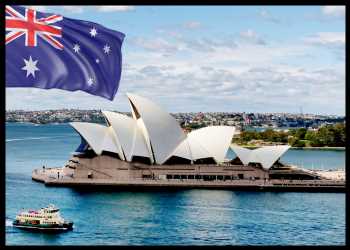Faster-than-expected inflation is likely to force the Reserve Bank of Australia to deliver a 25 basis point rate hike in November, which could be the last in the current tightening cycle.
Consumer prices posted a sequential growth of 1.2 percent, faster than the 0.8 percent increase in the second quarter, the Australian Bureau of Statistics reported Wednesday. Economists had forecast an annual rate of 1.1 percent.
The most significant contributors to the sequential increase were automotive fuel, rents, new dwellings purchased by owner occupiers and electricity.
Due to higher global oil prices, automotive fuel prices advanced 7.2 percent after two quarters of declines. Rents gained 2.2 percent with rental price growth for flats continuing to outpace price growth for houses.
On a yearly basis, the consumer price index registered an increase of 5.4 percent following a 6.0 percent rise a quarter ago. Prices were forecast to climb 5.3 percent.
Trimmed mean annual inflation of 5.2 percent was also lower in the September quarter, compared to 5.9 percent in the June quarter.
The monthly CPI indicator grew 5.6 percent annually in September, following a 5.2 percent gain in August.
At 2023 Commonwealth Bank Global Markets Conference on Monday, RBA Chief Michele Bullock said, “The Board will not hesitate to raise the cash rate further if there is a material upward revision to the outlook for inflation.”
The Reserve Bank has paused its tightening cycle since July. The central bank has raised its key rate by 4 percentage points since May last year.
Capital Economics’ economist Abhijit Surya said the RBA will hike the rate again at its next meeting in November as inflation surprises on the upside.
“We suspect the next hike will be the last in the tightening cycle,” Surya added.
Source: Read Full Article

